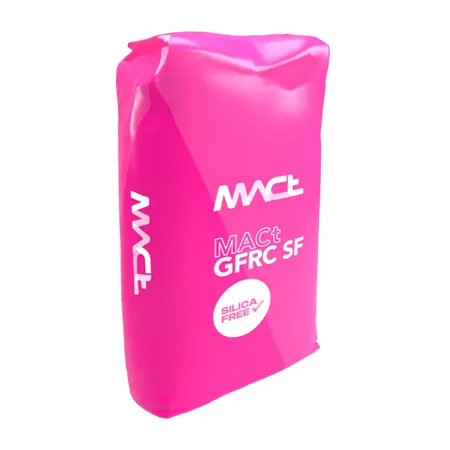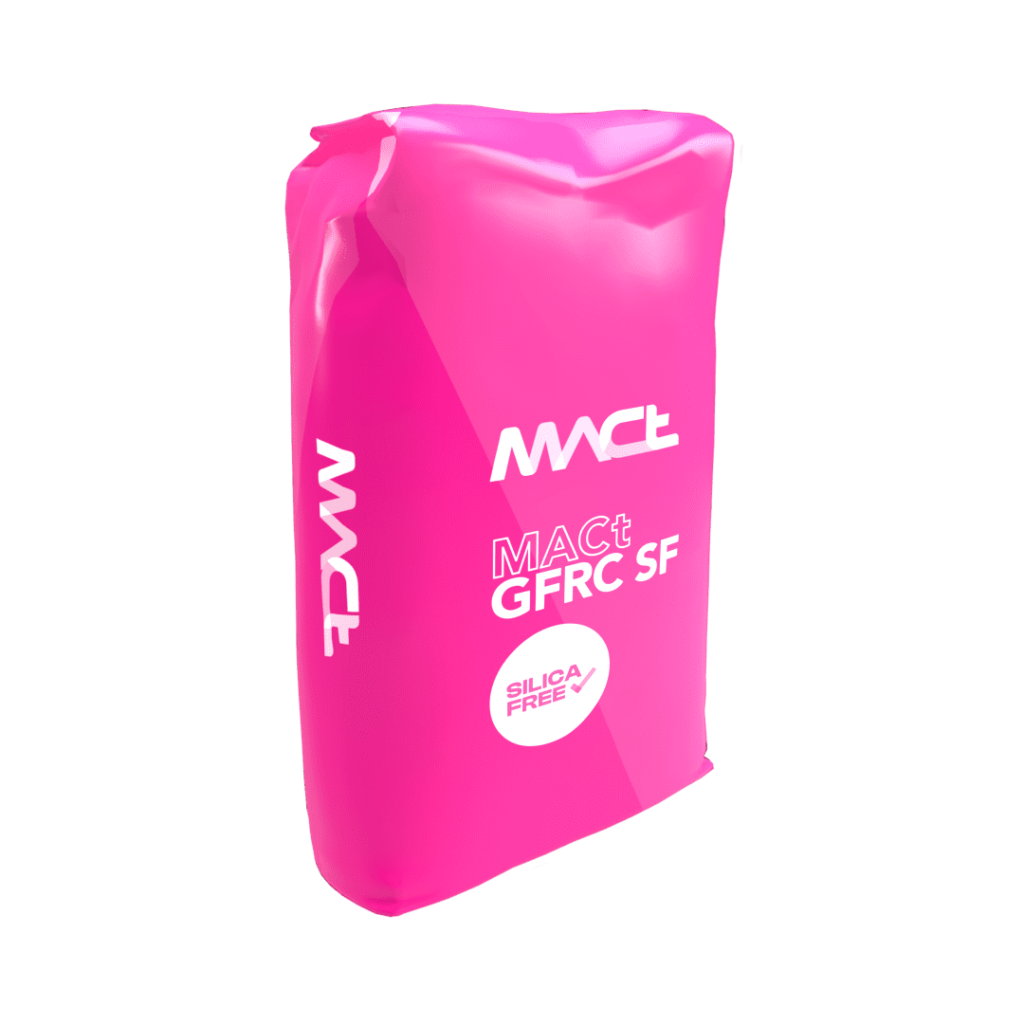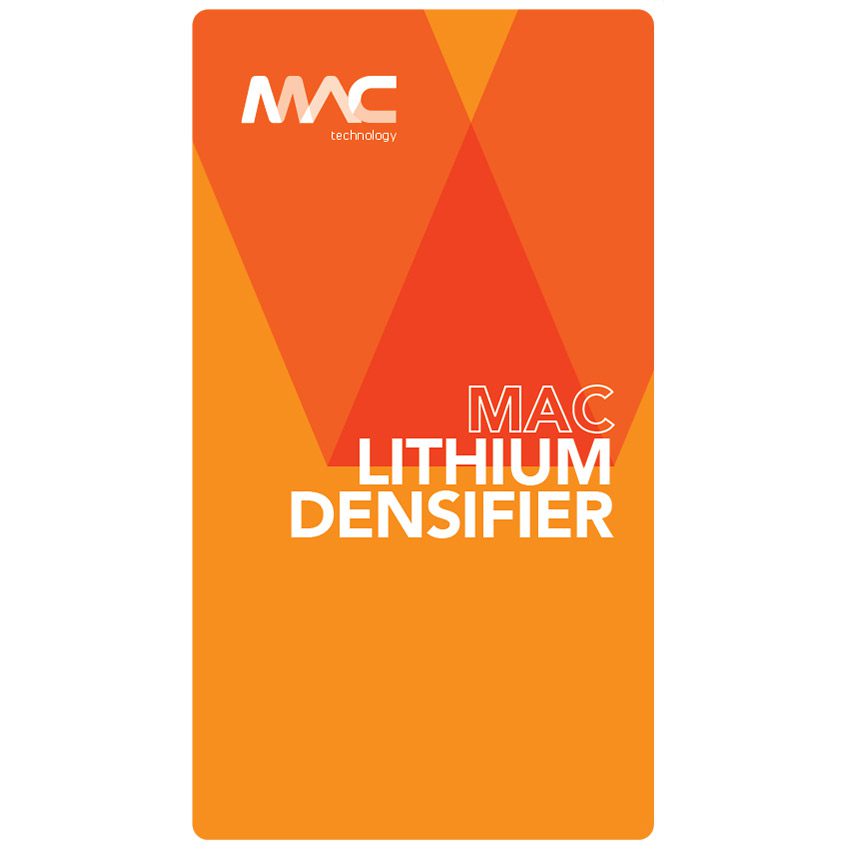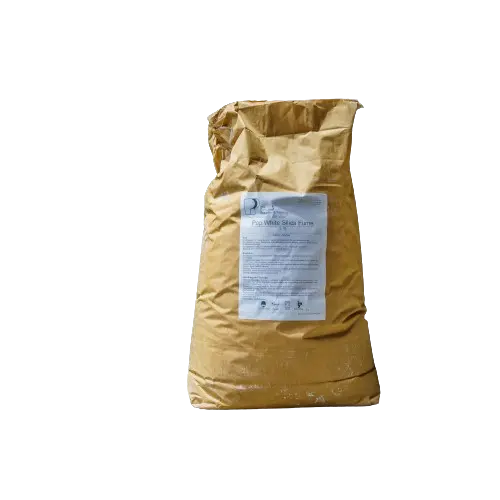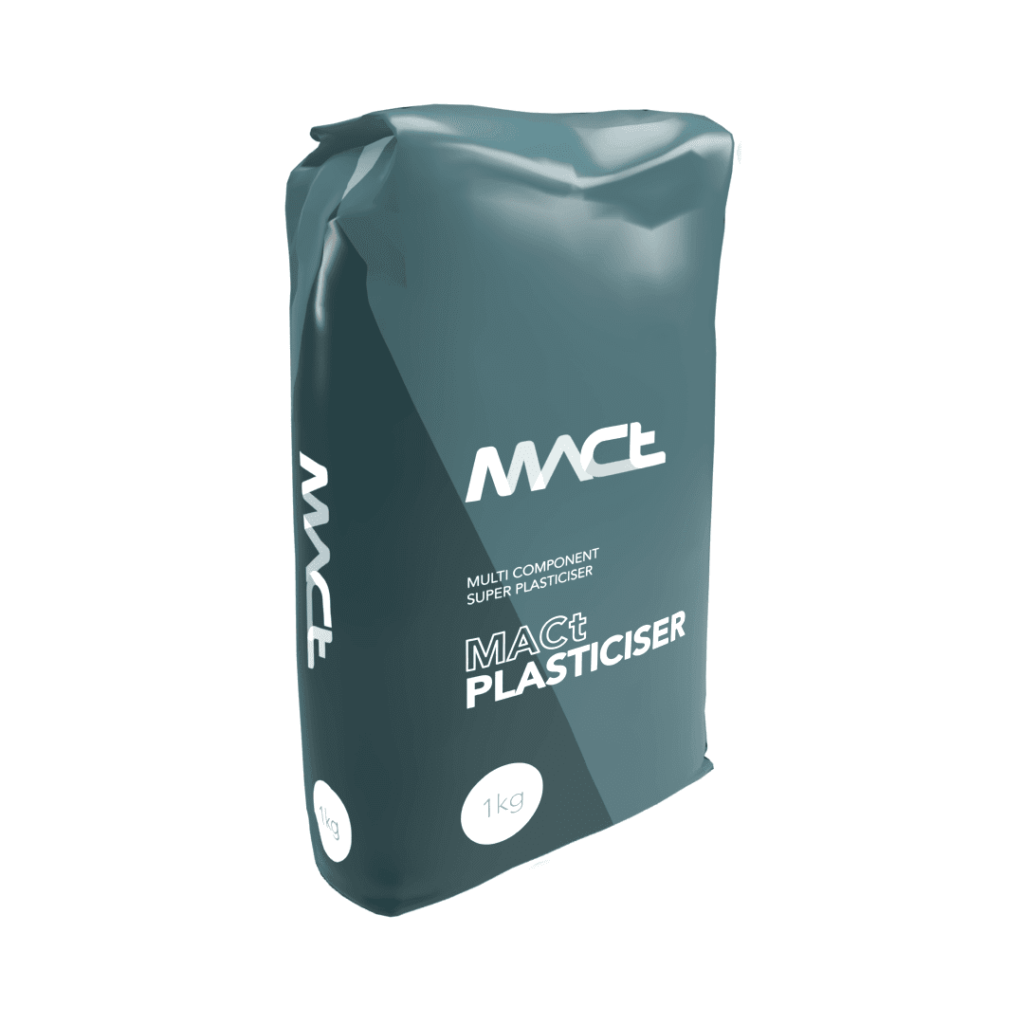Description
MACt GFRC Premix – Silica Free
The MACt Silica Free Premix is a game-changing product designed to offer a safer, healthier alternative to traditional mixes without sacrificing quality. This new product is an Ultra High-Performance Concrete mix that has been developed to behave similarly to the traditional premixes, but with the added benefit of being silica-free. The product is manufactured in the Queensland Manufacturing Facility and has been designed to be used in any application where Ultra High-Performance Concrete is required.
The MACt Silica Free Premix is a versatile and durable material that can be used in a wide range of applications. Some of the common uses for this product include architectural elements, façade cladding, furniture, and décor, pools and spas, fireplaces and fire pits, landscaping, custom projects, industrial applications, artificial reefs, and modular building.
This premix offers many advantages over traditional building materials, including its lightweight, high strength, and ability to be moulded into a wide range of shapes and sizes. It is also a cost-effective solution, requiring less labor and equipment, resulting in a faster installation time and a better finish.
The MACt Silica Free Premix is an economical, Class A shrinkage-compensated glass fiber reinforced concrete that is designed to offer enhanced early strength with high ultimate strength and low permeability, ensuring the durability of the hardened premix. The gaseous expansion system compensates for shrinkage and settlement in the plastic state, and the premixed material overcomes potential on-site mixing variations.
The MACt Silica Free Premix is a twin-component hydraulic binder glass fibre modified system with additional hydration, flow, defoaming, plasticizing, and anti-shrink admixtures. It develops high early strength without the use of chlorides and has no metallic iron content to cause staining.
The product is supplied ready to use in 20 kg bags, and the flow or consistency of the GFRC mix is controlled by the addition of potable water and MACt Plasticiser. The product has been tested in laboratory conditions and has shown impressive results in terms of compressive and flexural strength, consistency, flow, pump, spray, and trowel.
In conclusion, the MACt Silica Free Premix is an innovative product that offers a safer, healthier alternative to traditional mixes. This product has been designed to maintain all the qualities of traditional mixes while reducing the health impacts associated with silicosis. The product is versatile, durable, and cost-effective, making it an ideal solution for a wide range of applications. With the MACt Silica Free Premix, the possibilities are endless!
Mixing Instructions:
Before you start mixing, it’s important to prioritize safety. Make sure you are working in a well-ventilated area and have all necessary personal protective equipment (PPE) such as gloves, safety glasses, and a mask to protect yourself from the dust. GFRC mixtures contain fine powders that can irritate the eyes, lungs, and skin, so be sure to handle the materials with care.
Now, let’s walk through the steps for mixing MACt GFRC products:
- Step 1: Prepare Your Ingredients The first step is to ensure that you have all your ingredients properly weighed out before you start mixing. For a pourable mix, you will need water, premix, colour, plasticizer, and fibres. The exact amounts will depend on the type of mix you are making. The recommended amounts for each type of mix are listed in the guide.
- Step 2: Mix the Premix, Colour, and Plasticizer in a Separate Bucket To ensure a consistent mix, dry mix the premix, colour, and plasticizer together in a separate bucket before adding them to the water. This will help prevent clumping and ensure an even distribution of the colour throughout the mix.
- Step 3: Add 80% of the Premix Mixture into the Water Pour the premix mixture into the water, not the other way around, to reduce clumping and ensure proper mixing. Use a mixer to blend the mixture until it has a smooth and consistent texture.
- Step 4: Add the Remaining 20% of the Premix Mixture Next, add the remaining premix mixture to the water and continue mixing until you have a homogeneous mix. It’s important to scrape the sides and bottom of the bucket to ensure all the materials are mixed thoroughly.
- Step 5: Adjust the Consistency if Necessary If the mix is too thick to pour, add additional plasticizer, not water, to make the mix more flowable without reducing the overall strength. It’s essential to avoid adding water, as it will change the colour of the mix and make matching colours impossible.
- Step 6: Add Fibres to the Mix Once the mix is at the desired consistency for pouring, add the fibres and mix until you have a homogeneous mix. Be sure to mix the fibres in thoroughly, as this will help ensure the strength and durability of the final product.
Tips and Tricks:
- Use Good Quality Mixing Gear: A high-quality mixer and other mixing equipment will ensure that your mix is properly blended and reduce the likelihood of errors and inconsistencies.
- Adjust for Temperature: In cold weather, use cold water to make the mix more flowable, but do not dry mix plasticizer as the dosage will be greatly reduced. In hot weather, cool down the mix by replacing some of the water with ice (1kg of ice and 2kg of water is recommended).
- Pour at the Right Time: In hot temperatures, pour in the cooler times of the day to give more work time before initial setting. This will help ensure that the mix sets properly and does not dry out too quickly.
By following these steps and tips, you can successfully mix MACt GFRC products and achieve the desired results. Remember to always use caution when working with any product that produces dust and to work in a well-ventilated area with appropriate PPE. With practice, you’ll soon become an expert at mixing GFRC and creating beautiful, durable concrete products. In addition to following the steps and tips mentioned above, it’s also important to use good quality mixing gear. Investing in a high-quality mixer and other tools will make the mixing process more efficient and produce more consistent results.
You can also experiment with different fibres and additives to achieve different textures, colours, and finishes. As with any new skill, practice is key, and the more you work with GFRC, the more comfortable and confident you will become in your mixing abilities. So don’t be afraid to experiment and try new things, and soon you’ll be creating stunning concrete creations that are both beautiful and strong.
Flowable Mix:
- 20kg MACt SF Premix
- 3.1-3.2L Water
- 40-50g MACt Plasticiser
- 40g 3mm HD Fibres
- 350g 13mm Bundled Fibres
- 10g MACt Retarder Pro
- Colour
Demould Times:
When working with Glass Fibre Reinforced Concrete (GFRC), it is important to properly monitor and evaluate the curing process to determine when the piece is ready to be demoulded. Demoulding too early can result in the piece cracking or breaking, while demoulding too late can make it difficult to remove the piece from the mold.
One way to tell if a GFRC piece is ready to be demoulded is by conducting a tap test. The tap test involves tapping the surface of the GFRC with a metal rod or other hard object and listening to the sound it makes. When the GFRC is still wet and not fully cured, it will produce a dull thud when tapped. As the GFRC begins to cure, the tapping sound will become more high-pitched and clearer. When the sound becomes crisp and metallic, it is a good indication that the GFRC piece is ready to be demoulded.
Another way to evaluate if the GFRC piece is ready to be demoulded is by checking the surface moisture level. When the GFRC is still wet, it will be visibly moist and have a dull appearance. As it cures, the surface will start to dry out and become more matte in appearance. When the surface is no longer visibly moist and has a matte finish, it is a sign that the GFRC is ready to be demoulded.
The curing time can vary depending on the mix design, environmental conditions, and the size and complexity of the GFRC piece. Generally, the GFRC should be allowed to cure for at least 24 hours before attempting to demould.
A combination of methods can be used to determine when a GFRC piece is ready to be demoulded. These methods include conducting a tap test, checking the surface moisture level, and following the recommended curing time. Proper monitoring and evaluation of the curing process will help to ensure that the GFRC piece is fully cured and ready to be removed from the mold without any damage.
Additional Information
Additional information
| Weight | 20.5 kg |
|---|---|
| Dimensions | 40 × 33 × 20 cm |
| Colour: No selection | Grey, White |
| Bag: No selection | 1 Bag (20KG), 56 Bags (1120KG) |

